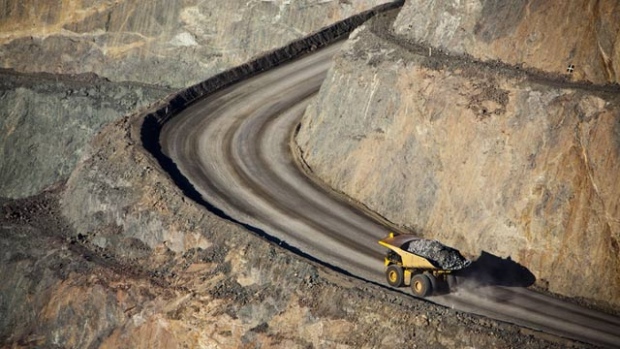Mar 7, 2017
Bankers, markets anticipate mining M&A at PDAC
, Reuters

Bankers and stock markets are signaling an upcoming wave of mergers and acquisitions among small and mid-sized miners, but financiers worry that companies have not learned from costly mistakes made in the last commodity boom.
In a "recycling of assets," smaller miners bulked up in recent years as the world's biggest operators sold a string of assets to repair debt-loaded balance sheets and ride out anemic prices.
"They're not going to sit still," said TD Securities deputy chair of investment banking, Rick McCreary, at a Toronto mining conference on Tuesday. "You're going to see consolidation in the mid-tier and junior space to create platforms for growth going forward."
In a push to improve its portfolio, Goldcorp Inc, the world's No. 3 gold miner by market value, sold non-core mines in recent years, he said. That bolstered the smaller buyers: Tahoe Resources Inc, Primero Mining Corp, Leagold Mining Corp, and Peak Gold, later acquired by New Gold Inc.
Likewise, Australian producer Newcrest Mining Ltd sold assets that helped drive growth at Evolution Mining Ltd .
Some investors also point to outsized stock market gains by small gold miners, with promising deposits and developments, as a sign of upcoming deal activity.
"The way they're moving, I wonder if there's something more behind it," said Joseph Foster, portfolio manager and gold strategist at New York-based VanEck.
"At some point, we're probably going to have another M&A cycle and I wonder if the market is starting to anticipate that."
Sky-high gains, like the 170 per cent jump for Belo Sun Mining Corp shares over the past 12 months, suggest acquisitions could come at a premium.
"The companies (will be) competing with the market for these stocks and the market bids them up and makes them expensive," Foster said.
Bankers speaking at the Prospectors and Developers Association of Canada conference on Tuesday predicted that it is unlikely miners will avoid pitfalls from the last deal-making binge.
A fierce push for growth fueled high-priced, multibillion dollar deals in 2010-2012, many of which were ultimately written off.
"We're probably going to repeat the mistakes of the past," said David Scott, CIBC vice chairman and managing director of mining. Typically, higher metals prices lift share prices, which spark investor calls for growth and leads to lofty deals at the top of the market, he said.
Deal-making may also see more participation from Chinese buyers and well-established streaming financiers, he said.
Streamers, which provide miners with upfront payments in exchange for future production at discounted, fixed prices, have completed deals worth more than US$12 billion in the last two years, he said.
"We are hungry," said Jerry Xie, executive vice president at China Gold International Resources Corp Ltd, which favors deals in the US$1 billion range to grow beyond its two mines. "China Gold is looking to become an international global mining player."
The world's biggest miners, burned by their previous free-spending ways, will do more joint ventures for mine development to share costs, risk and infrastructure, the bankers predicted.
They point to the 2015 partnership between Goldcorp and Teck Resources Ltd, to develop neighboring mines in Chile, as a perfect example.
Miners still have scar tissue from their "near-death experience" in 2015-2016, said Scotiabank director of global mining and metals, Peter Collibee, and will push for "bullet-proof" balance sheets going forward.
Egizio Bianchini, co-head of BMO's global metals and mining practice, was uncertain.
"There is more capital than brains to deploy it," he said. "I hope that this time, the miners have found out that cyclicality and excess leverage don't go well together. We've proved it."


